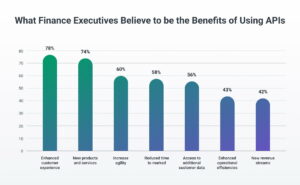
Regulatory deadlines. Paradigm-shifting tech advances. Impending climate reporting. Rising inflation. These trends and more will shape how insurance CFOs navigate 2023.
As the industry steels itself against economic headwinds, old-school insurance science will collide with new-school regulation and data science in unprecedented ways. Now is an ideal time to conduct a temperature check with insurance CFOs about the industry as it stands – and where it’s headed.
Regulation nation: transparency opens doors to data
After quarters of dry runs, January 2023’s regulatory compliance deadlines have arrived: IFRS 17, and LDTI, IFRS 17’s American cousin.
Despite new regulation, CFOs agree: the underpinnings of the insurance business aren’t changing anytime soon. New standards must fully incorporate before they impact the sector’s day-to-day workings. However, in preparing for these regulatory changes, most CFOs expected to collect lakes of historic and current data. Instead, they got oceans. That alone has been motivation to modernize.
Seeing how risk technology can advance their reporting capabilities, CFOs feel newly empowered to evolve and expand reporting in 2023. The introduction of new measurements like profitability monitoring, current financials and business outlook, the future, risk, and more may be viewed on a macro- and micro-level as a matter of course.
CFOs anticipate enhanced visibility of past, present and future data to happen alongside improvements to how they adapt to IFRS 17 and LDTI's respective accounting standards. Insight-driven profitability and liability valuation will be particularly valuable as CFOs brace for the greatest challenges of the year: weathering inflation, increasing climate risk and keeping stakeholders up to date with market fluctuations.
Communication is key in 2023
Facing potential recession and fallout from recent regulatory adaptation, stakeholder communication will be imperative. According to the CFO of one multinational insurer, “With IFRS 17, there will be a lot more volatility. And the impact on the business will need to be explained. Boards, management, external parties – all need to know what’s going on.”
Ultimately, the digital migration that happened in the pandemic’s wake proved an unexpected boon in this regard, opening new channels of team and stakeholder communication. CFOs have had to bolster team morale and loop in domestic and international stakeholders, all while navigating the digital transition. Now, they stand to reap the benefits.
Getting this far unquestionably caused sleepless nights for CFOs. Creating and maintaining a central accounting system incorporating substantial updates to systems, processes and KPIs is no easy task. But this massive, industry-wide investment – an estimated $2 billion for LDTI and $20 billion for IFRS 17 – stands to pay dividends far beyond 2023.
Inflation necessitates pricing optimization
Economic uncertainty and ongoing supply chain disruption, among other factors, continue to stoke inflation, insurance premiums rising in parallel.
Motor vehicle insurance, P&C and homeowner's insurance are likely to see the highest premium hikes. For instance, Hannover Re recently opined that premium increases of at least 10% are necessary for the German motor business to offset rising costs for parts and repairs. Consumers will feel an ensuing crunch through primary insurers.
At the same time, CFOs are attuning to regulatory warnings on pricing. Insurers are not to offer discounts to win or retain customers with the expectation that inflation will rebalance in the coming year. The message is clear: buckle up for long-haul economic turbulence.
In the wake of rising costs, raising premiums to shore up capital and liquidity will emerge as a top-line priority, and not just in 2023. CFOs anticipate pricing that incorporates reserves enrichment will be the new norm, while maintaing a fully auditable and traceable process.
With profitability, brand reputation and market growth on the line, the stakes couldn't be higher for CFOs to enhance their pricing processes and reduce costs. Those that invested in new data aggregation, methodologies and solutions they brought in to adapt for LDTI and IFRS 17 compliance could find those investments also deliver a pricing optimization edge.
Insurance feels the heat
At the close of 2022, an international climate insurance fund launched at COP27. Amid broader industry talks, climate risk is top of mind for insurance sector CFOs in 2023.
According to the National Oceanic and Atmospheric Administration (NOAA), climate change-related weather wreaked $145 billion in damage in the U.S. in 2021. Hurricane Ida alone cost auto, home and business insurers at least $31 billion, per the Wall Street Journal. As climate change accelerates, natural disasters are expected to compound in frequency and power.
At its spring 2022 meeting, the National Association of Insurance Commissioners (NAIC) moved to require most of the U.S. insurance industry to engage in climate reporting by November 2022. CFOs expect to measure the impacts of this change throughout the coming year.
As regulators grapple with selecting or writing mandated disclosure frameworks (such as the NAIC-favored Task Force on Climate-Related Financial Disclosures), insurance CFOs have helmed integrating climate risk accounting and disclosures. The inevitability of ESG and climate reporting as an industry norm will continue to come into focus in 2023.
The CFO climate forecast
In 2023, the P&C insurance market remains more concerned with climate change than other sectors. It stands to reason given the staggering property damage and losses covered by P&C insurers in recent years. How will companies keep insurance affordable for the average small business or homeowner amid rampant wildfires and increasing hurricane damage? Maintaining financial solvency without pricing out clientele is a significant conundrum.
Furthermore, with physical assets, reputational risks, transition risks, and incorporating climate disasters and health impacts into life insurance on the horizon, CFOs know climate will soon touch every aspect of the industry. Put into perspective, the 20 separate billion-dollar-plus U.S. weather disasters reported by NOAA in 2021 killed 688 people.
No matter the sector, insurance CFOs needn’t wait to incorporate climate risk into their decision-making. The platforms and solutions they implemented to comply with IFRS 17 and LDTI can be used for this purpose. In 2023, many CFOs could dip their toes in the water by leveraging existing tools to incorporate climate risk into reporting, stress testing and more.
Looking ahead with the cloud
Though the influx of new financial reporting regulations provoked industry-wide anxiety, CFOs came to recognize that the risktech transitions they’ve spearheaded to meet mandates paved the way for an informed future. As demand grows for greater transparency and reporting amid economic turbulence, the connective capabilities of financial software in the cloud can empower CFOs to meet future challenges head-on.
- SEO Powered Content & PR Distribution. Get Amplified Today.
- Platoblockchain. Web3 Metaverse Intelligence. Knowledge Amplified. Access Here.
- Source: https://www.finextra.com/blogposting/23710/temperature-check-exploring-risk-management-issues-facing-insurance-cfos-in-2023?utm_medium=rssfinextra&utm_source=finextrablogs
- 2021
- 2022
- 2023
- a
- About
- accelerates
- According
- Accounting
- adapt
- adaptation
- administration
- advance
- advances
- affordable
- against
- aggregation
- ahead
- All
- alone
- alongside
- American
- Amid
- among
- and
- anticipate
- Anxiety
- aspect
- Assets
- Association
- atmospheric
- auto
- average
- before
- benefits
- Beyond
- Billion
- bolster
- brand
- broader
- brought
- business
- capabilities
- capital
- caused
- central
- cfo
- CFOs
- chain
- challenges
- change
- Changes
- changing
- channels
- check
- clear
- clientele
- Climate
- Climate change
- Close
- Cloud
- CNBC
- collect
- Collide
- come
- coming
- Communication
- Companies
- compliance
- Compound
- concerned
- Conduct
- Consumers
- continue
- Cost
- Costs
- could
- course
- covered
- Creating
- crunch
- Current
- Customers
- data
- data science
- Date
- day-to-day
- Decision Making
- deliver
- Demand
- digital
- Dip
- disasters
- disclosure
- Disclosures
- discounts
- Disruption
- dividends
- Domestic
- doors
- dry
- Economic
- Edge
- empower
- empowered
- engage
- enhanced
- ESG
- estimated
- Every
- evolve
- existing
- Expand
- expect
- expectation
- expected
- explained
- Exploring
- external
- facing
- factors
- fallout
- financial
- financials
- Find
- Finextra
- fluctuations
- Focus
- Force
- frameworks
- Frequency
- from
- fully
- fund
- future
- German
- given
- going
- greater
- greatest
- Grows
- Growth
- happen
- happened
- headed
- headwinds
- Health
- higher
- highest
- Hikes
- historic
- Home
- horizon
- How
- However
- HTML
- HTTPS
- hurricane
- ideal
- Impact
- Impacts
- impending
- imperative
- implemented
- improvements
- in
- incorporate
- incorporates
- incorporating
- Increases
- increasing
- industry
- inflation
- influx
- informed
- instance
- instead
- insurance
- insurance industry
- insurers
- Integrating
- International
- Introduction
- invested
- investment
- Investments
- issues
- IT
- itself
- January
- Keep
- keeping
- Key
- Know
- launched
- leveraging
- liability
- Life
- likely
- Line
- Liquidity
- losses
- Lot
- management
- mandates
- many
- Market
- massive
- Matter
- measure
- measurements
- Meet
- meeting
- message
- methodologies
- migration
- mind
- modernize
- monitoring
- more
- most
- Motivation
- Motor
- multinational
- nation
- National
- Natural
- Navigate
- navigating
- necessary
- Need
- New
- November
- oceans
- offer
- offset
- ONE
- ongoing
- opening
- opens
- optimization
- Other
- Outlook
- Parallel
- particularly
- parties
- parts
- past
- Pay
- People
- perspective
- physical
- Platforms
- plato
- Plato Data Intelligence
- PlatoData
- potential
- power
- Premium
- preparing
- present
- pricing
- primary
- priority
- process
- processes
- profitability
- property
- proved
- purpose
- put
- raising
- RE
- reason
- rebalance
- recent
- recently
- recession
- recognize
- reduce
- Regulation
- regulations
- Regulators
- regulatory
- Regulatory Compliance
- remains
- Reporting
- reputation
- require
- reserves
- respective
- rising
- Risk
- risk management
- risks
- same
- Science
- sector
- Sectors
- selecting
- separate
- Shape
- significant
- small
- small business
- Software
- Solutions
- Solvency
- Soon
- spring
- stakeholder
- stakeholders
- stand
- standards
- stands
- street
- stress
- substantial
- such
- supply
- supply chain
- system
- Systems
- Talks
- Task
- task force
- team
- tech
- Technology
- Testing
- The
- The Future
- their
- Through
- throughout
- time
- to
- tools
- top
- touch
- transition
- transitions
- Transparency
- Trends
- turbulence
- u.s.
- Uncertainty
- underpinnings
- Unexpected
- unprecedented
- Updates
- Valuable
- Valuation
- vehicle
- visibility
- Volatility
- wait
- Wake
- Wall Street
- Water
- ways
- Weather
- while
- will
- win
- without
- workings
- writing
- WSJ
- year
- years
- zephyrnet












